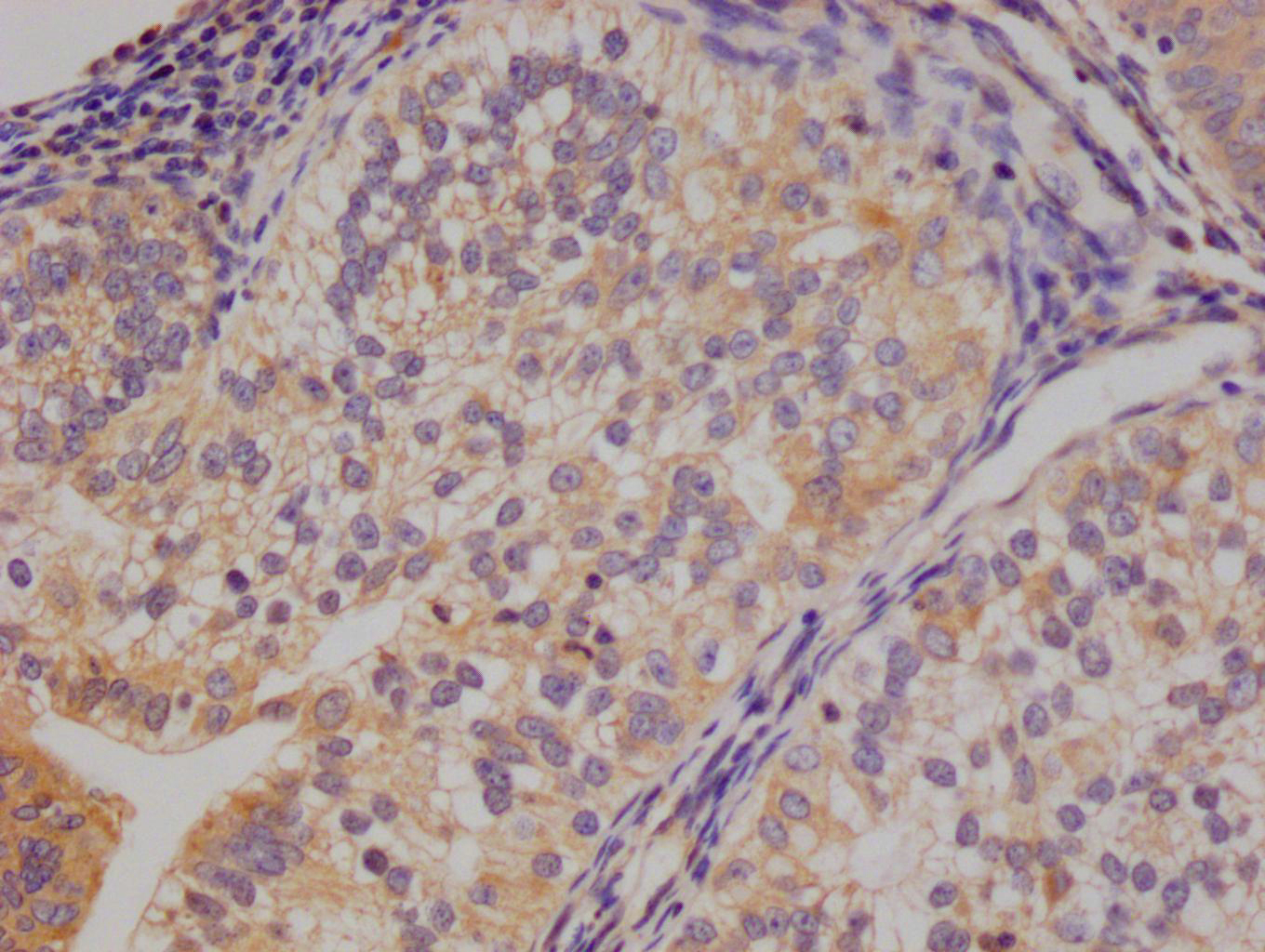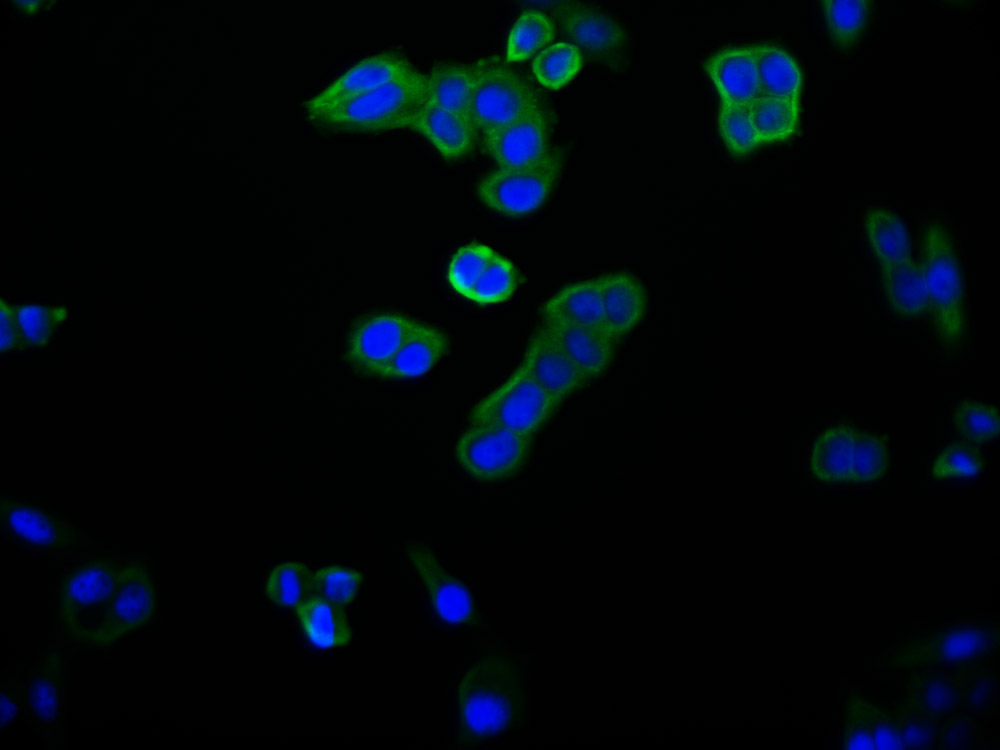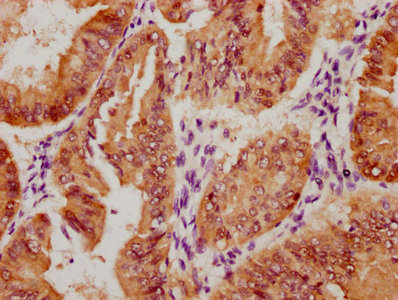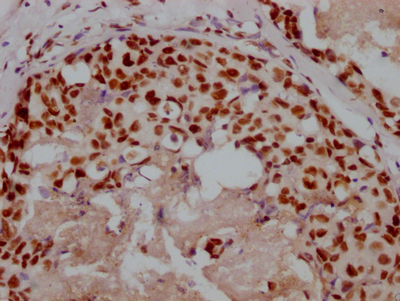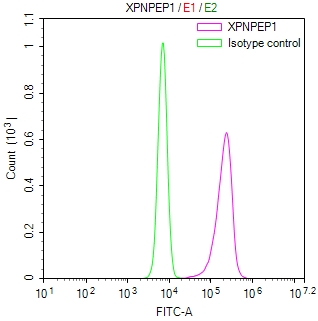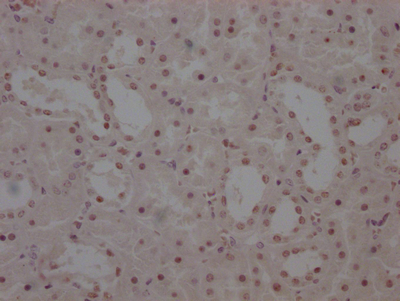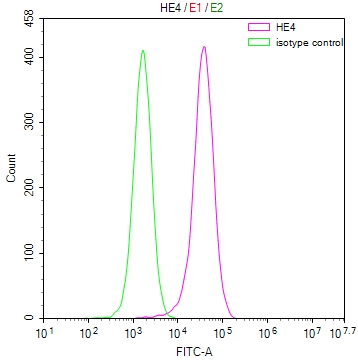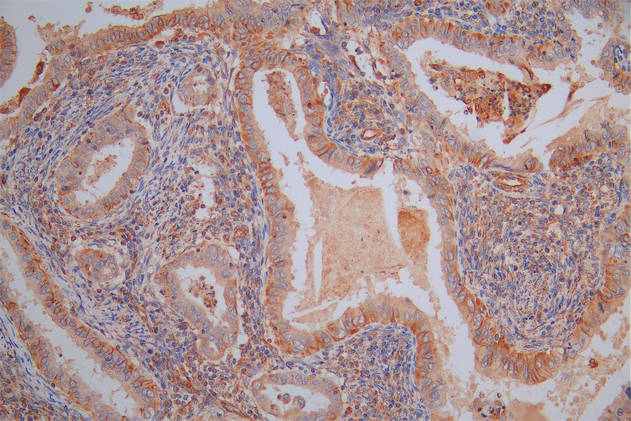EML2 Antibody
-
货号:CSB-PA007643GA01HU
-
规格:¥3,900
-
其他:
产品详情
-
Uniprot No.:O95834
-
基因名:EML2
-
别名:1600029N02Rik antibody; Echinoderm microtubule associated protein like 2 antibody; Echinoderm microtubule-associated protein-like 2 antibody; Echinoderm MT associated protein like protein 70 antibody; ELP70 antibody; EMAL2_HUMAN antibody; EMAP-2 antibody; EMAP2 antibody; EML2 antibody; HuEMAP-2 antibody
-
宿主:Rabbit
-
反应种属:Human,Mouse,Rat
-
免疫原:Human EML2
-
免疫原种属:Homo sapiens (Human)
-
抗体亚型:IgG
-
纯化方式:Antigen Affinity Purified
-
浓度:It differs from different batches. Please contact us to confirm it.
-
保存缓冲液:PBS with 0.1% Sodium Azide, 50% Glycerol, pH 7.3. -20°C, Avoid freeze / thaw cycles.
-
产品提供形式:Liquid
-
应用范围:ELISA,WB,IHC
-
Protocols:
-
储存条件:Upon receipt, store at -20°C or -80°C. Avoid repeated freeze.
-
货期:Basically, we can dispatch the products out in 1-3 working days after receiving your orders. Delivery time maybe differs from different purchasing way or location, please kindly consult your local distributors for specific delivery time.
相关产品
靶点详情
-
功能:Tubulin binding protein that inhibits microtubule nucleation and growth, resulting in shorter microtubules.
-
基因功能参考文献:
- We have determined crystal structures of the coiled-coils from EML2 and EML4, which describe the structural basis of both EML self-association and oncogenic EML4-ALK activation. PMID: 25740311
- Both EMAP II and CXCR3 were essentially required for gp120-induced lung microvascular endothelial cell apoptosis. PMID: 24318111
-
亚细胞定位:Cytoplasm, cytoskeleton. Cytoplasm, cytoskeleton, spindle. Note=Colocalizes with the microtubule cytoskeleton. Colocalizes with the mitotic spindle.
-
蛋白家族:WD repeat EMAP family
-
组织特异性:Ubiquitous.
-
数据库链接:
HGNC: 18035
OMIM: 617494
KEGG: hsa:24139
STRING: 9606.ENSP00000442365
UniGene: Hs.24178
Most popular with customers
-
-
YWHAB Recombinant Monoclonal Antibody
Applications: ELISA, WB, IF, FC
Species Reactivity: Human, Mouse, Rat
-
Phospho-YAP1 (S127) Recombinant Monoclonal Antibody
Applications: ELISA, WB, IHC
Species Reactivity: Human
-
-
-
-
-


